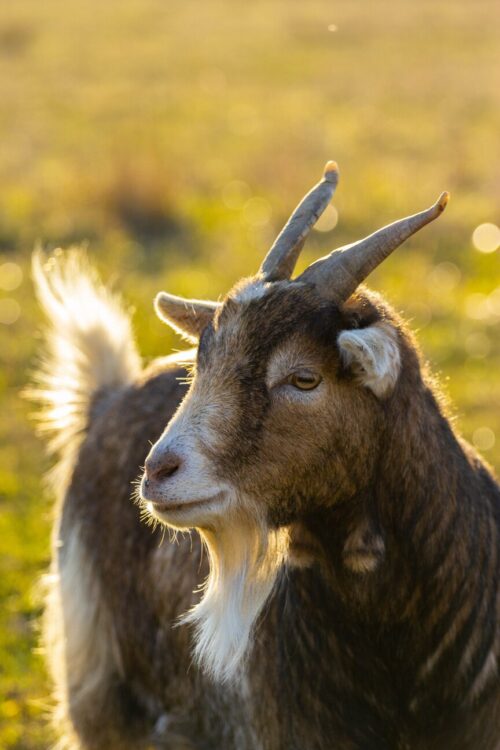The Anglo-Nubian goat is a crossbreed between the British goats and bucks of African and Indian origin, which can also be found in Northern Nigeria.
This specie is a multipurpose goat for the production of milk, meat, and hide. In this post, we’ll share with you important information about Anglo-Nubian doe and buck.

Characteristics of Anglo-Nubian Goat
1) It is not an excellent milker but has an average butterfat content (4-5%).
2) The breeding season of the Anglo Nubian unlike the Swiss breed takes a longer period hence it is likely to milk all through the year.
3) This breed of goat is usually big, elegant, and proud. Its name is derived from Nubia, a place in Northeastern African.
4) The Anglo Nubian is mostly used in grading-up programs in tropical nations to enhance the production of meat and milk in local breeds because it is most adaptable in hot climate conditions, unlike other dairy goat breeds.
5) The initial goats brought in from Arabia, India, and Africa were long-legged, tough goats that had some features that are desired by goat herders in England.
The imported bucks were crossed with the common short-haired does by English breeders before 1895 to derive the Anglo-Nubian goat (known as the Nubian in the US).
They are referred to as the “aristocratic” looking goat with very long drooping ears that hang near the head.
It has a distinctive Roman nose and is normally short-haired. The common colours of this goat is red, black, or tan with a combination of white on either of these colours.
The males are characterized with short hairs, especially along the back and thighs, unlike the Swiss breeds.
Their udder is large and at times more sagging than those of the Swiss breed.
An adult doe of Anglo-Nubian goat has a height of at least 30inches at the withers and weighs at least 135 pounds or over, while the males ought to stand at least 35 inches at the withers and would weigh at least 175 pounds.
Unlike the Swiss breed, the Anglo-Nubian commonly gives less milk, but more of milk with high butterfat content.
The head makes this breed stand out, facial outline between the eyes and muzzle is strongly convex.
The ears are usually pendulous, long (covering at least an inch further than the muzzle when held flat along the face), and wide. Their hair is fine, short, and glossy.
They lie very close to the head at the temple region and flare somewhat out and well forward at the rounded tip, thus making a “bell” shape. The ears are light, and the cartilage is well defined.
Countries where Anglo-Nubian Goat can be found
- United Kingdom
- Nigeria
- India
- Russia
- Australia
- United States (called Nubian)
- Egypt
- Sudan
- Libya etc
The Anglo-Nubian doe
The high-producing Anglo-Nubian doe should also be an efficient reproducer. Anglo-Nubian doe has a mild temperament and look alert and feminine.
One spectacular feature of the doe is that the udder (breast) is well developed not fleshy, however, they have soft texture after milking.
The udder should also be round, and not dangling or ‘split’ between the halves.
The Anglo-Nubian buck
The Anglo-Nubian buck have high reproductive performance while such an attribute to its offspring.
They have a good conformation and depth of body, and they are not usually coarse in appearance despite their masculine look.
Good size of testicles, well balanced and firm while the scrotum is well placed and allow the testes to hang away from the body.
Only bucks that are not carriers of the gene for the beta mannosidosis condition (a lethal neurological disease of newborn Anglo-Nubian kids) should be used for breeding.
Final thought:
In Nigeria, Anglo-Nubian goats are used for meat production, particularly in the Northern part of the country, just like other breeds of goats.
They are used for suya (barbecue) at nightclubs, naming ceremonies and lots of other ceremonies. Nigerian rarely rear goats for milk production. Just like French-Alpine Goat, Anglo-Nubian goats are fantastic livestock.
Feature image:
- By Maxime Agnelli on Unsplash


